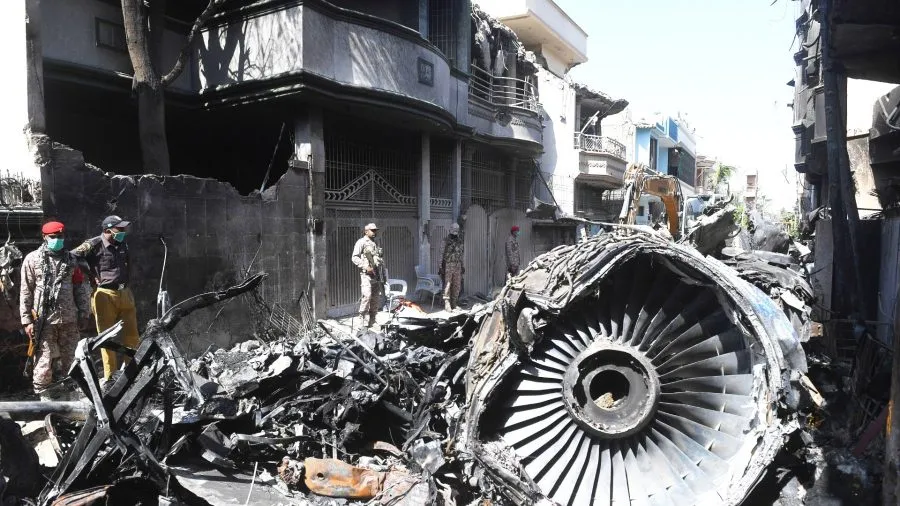
Completely unacceptable approach preceded PK8303 crash
May 31, 2020

The PK8303 crash was preceded by a series of alarming lapses in safety protocols and decision-making by the airline and crew. Reports indicate a disregard for standard operating procedures, including inadequate pre-flight checks and poor communication among the flight team. Additionally, there were indications of pressure to complete the flight despite adverse weather conditions and potential technical issues. The combination of insufficient training and a failure to prioritize safety ultimately contributed to the tragedy, highlighting a systemic issue within the organization that prioritized operational efficiency over the well-being of passengers and crew. This unacceptable approach underscores the need for stricter adherence to safety measures in aviation.
Understanding the PK8303 Crash
The tragic crash of PK8303, operated by Pakistan International Airlines (PIA), raised several questions regarding flight safety and operational protocols. The investigation revealed a series of missteps and a completely unacceptable approach that preceded the disaster. This article delves into the factors that contributed to the crash, shedding light on the importance of adhering to strict aviation standards.
Key Factors Leading to the Crash
In the days leading up to the PK8303 crash, several critical errors were identified. The following are some of the pivotal factors that contributed to the incident:
| Factor | Description |
|---|---|
| Pilot Error | The flight crew's inability to follow standard operating procedures led to a series of mistakes during the landing approach. |
| Communication Breakdown | There was a significant lack of communication between the cockpit crew and air traffic control, which further complicated the landing process. |
| Maintenance Issues | Inadequate maintenance checks prior to the flight raised serious concerns about the aircraft's airworthiness. |
| Pressure to Perform | There was immense pressure on the pilots to complete the flight on time, which may have influenced their decision-making. |
The Role of Pilot Training
One of the most alarming aspects of the PK8303 crash was the evident deficiencies in pilot training. Well-trained pilots are crucial for ensuring flight safety. Unfortunately, the investigation highlighted a lack of adequate training programs that could have prepared the crew for emergency situations.
Effective training programs not only focus on technical skills but also emphasize the importance of decision-making under pressure. In the case of PK8303, the pilots struggled to manage the situation effectively, which ultimately led to the crash.
Regulatory Oversight and Compliance
The aviation industry is governed by strict regulations aimed at ensuring safety and accountability. The PK8303 incident revealed significant lapses in regulatory oversight. It is imperative that airlines and regulatory bodies work together to enforce compliance with established safety standards.
Failure to comply with these regulations can lead to catastrophic outcomes, as seen in the PK8303 crash. It is essential for both airlines and regulatory bodies to prioritize safety over operational efficiency.
The Importance of Transparent Reporting
Another critical takeaway from the PK8303 crash is the need for transparent reporting of safety issues within the aviation industry. When airlines conceal problems or downplay incidents, it creates a culture of complacency that can lead to severe consequences.
Open dialogue regarding safety concerns can help foster a culture of accountability and continuous improvement. This approach not only enhances safety but also helps build trust with passengers, ensuring they feel secure while flying.
Lessons Learned
The PK8303 crash serves as a stark reminder of the potential consequences of negligence in the aviation sector. Several lessons can be drawn from this tragic incident, including:
- Prioritizing Safety: Safety should always be the top priority for airlines and crew members.
- Enhanced Training: Increased focus on comprehensive training programs for pilots and crew is essential.
- Regulatory Compliance: Strict adherence to regulatory standards is non-negotiable for operational safety.
- Open Communication: Promoting transparent and open communication can prevent incidents and improve overall safety.
Conclusion
The crash of PK8303 is a tragic example of how a series of completely unacceptable approaches can culminate in disaster. By learning from these mistakes, the aviation industry can work towards preventing future incidents and ensuring that air travel remains one of the safest modes of transportation available.
As we continue to analyze the factors surrounding the PK8303 crash, it is vital to remain vigilant and committed to improving safety measures. By implementing robust training programs, ensuring regulatory compliance, and fostering a culture of transparency, the aviation industry can strive for excellence in safety and reliability.
Ultimately, the lessons learned from PK8303 should serve as a catalyst for change, prompting all stakeholders to take the necessary steps to prevent similar tragedies in the future. The safety of passengers must always be the top priority in the aviation industry.
Related Articles

Explore Thailand: The Best Islands to Visit for Paradise, Adventure, and Relaxation

The Ultimate Guide to the Best Islands in Thailand for Your Next Getaway

Do babies need passports? How to get a passport for a newborn

How to get a U.S. passport fast: here’s how to expedite the process

What is Mobile Passport Control: 5 reasons why you should use it

SENTRI vs. Global Entry: A detailed guide

Do you need a passport to go to the Bahamas? Let’s find out

Do you need a passport to go to Mexico? A detailed guide

Do you need a passport to go to Canada? We got the answer

Do You Need a Passport for a Cruise: An Essential Travel Guide

Booster Seat Requirements: All the Rules to Follow in Your Rental Car

What Are the World’s Most Powerful Passports, and How Does Yours Rank?

How to Take a Passport Photo at Home: A Helpful Guide

You've got to have heart! Southwest's new livery

Your opinion: Should water be free on low cost carriers?

Young women bolder than guys as solo travellers
